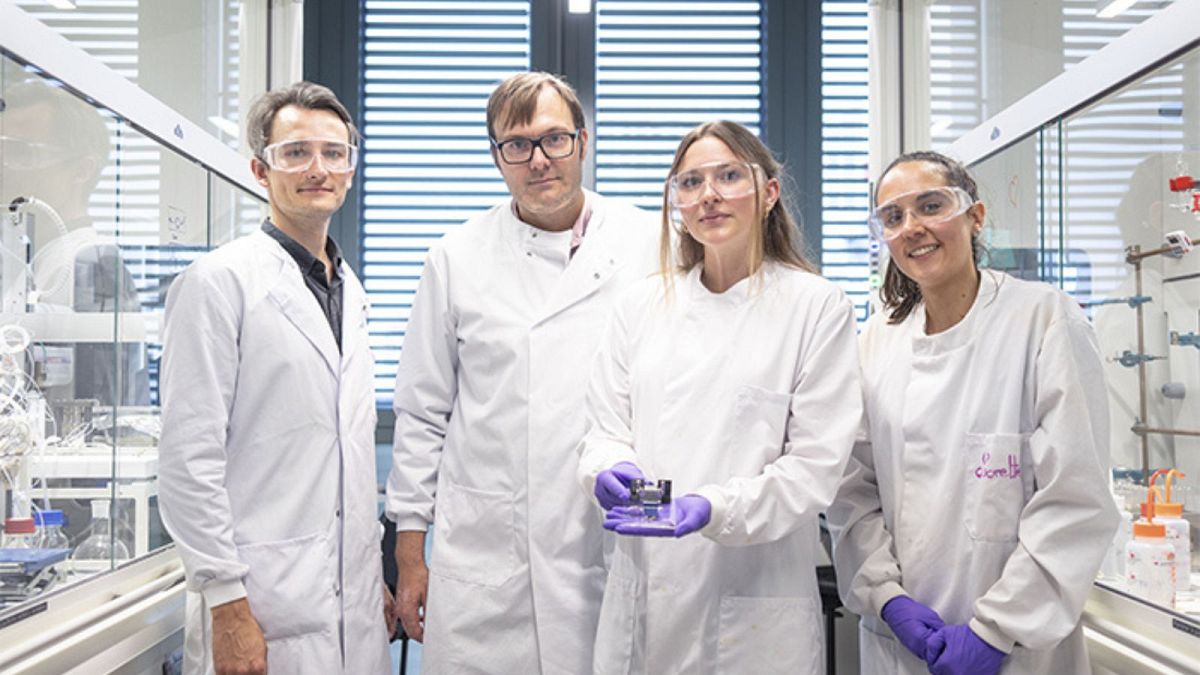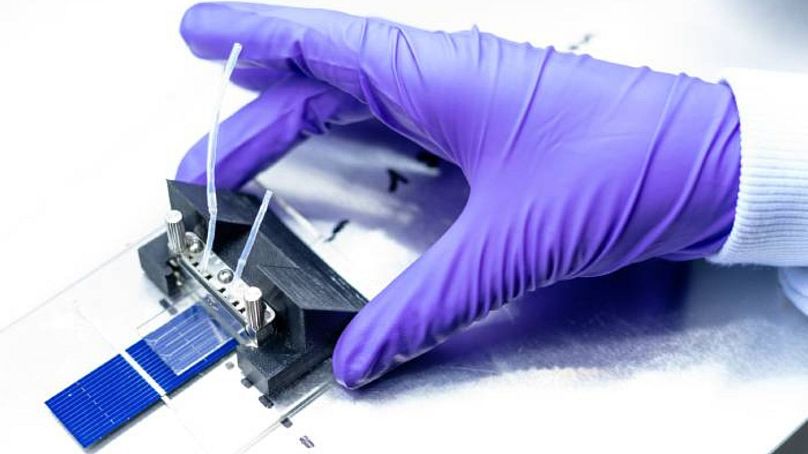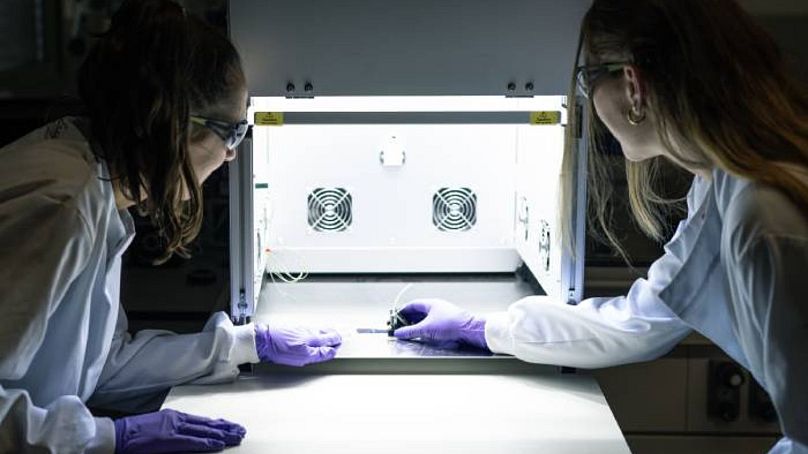It builds on previous research showing solar energy can be stored for up to 18 years.
Solar energy storage is a key part of the clean energy puzzle.
The world is on track to install nearly 600 GW worth of solar power this year - 29 per cent more than last year even after unprecedented growth in 2023.
Making sure solar energy can be stored is key to taking the renewable to the next level, according to UK think tank Ember.
But - among other challenges - many batteries are made from unsustainable materials, and have a tendency to overheat.
In a “very exciting” development, researchers based at the Barcelona East School of Engineering (EEBE) have now tackled both issues with a unique hybrid device.
“I am very excited about this since we are demonstrating that it is possible to increase efficiency and add storage to photovoltaic systems,” lead researcher professor Kasper Moth-Poulsen tells Euronews Green.
How does the new solar storage tech work?
The device combines a silicon solar cell with a storage system called MOST, which stands for molecular solar thermal energy storage systems.
While working at Chalmers University of Technology in Gothenburg, Moth-Poulsen used MOST to show that solar energy can be stored for 18 years.
The technology is based on a specially designed molecule of carbon, hydrogen and nitrogen that changes shape when it comes into contact with sunlight.
These are common elements - providing an alternative to other technologies relying on scarce materials like lithium.
When ultraviolet light shines on them, the organic molecules undergo a chemical transformation and store the energy for later use.
A unique feature of the system is that the molecules also provide cooling in the photovoltaic cell by acting as an optical filter, and blocking photons (light particles) that would normally cause heating.
Unsurprisingly, battery systems work more efficiently when they don’t get too hot.
In this case, lab tests have achieved a record energy storage efficiency of 2.3 per cent for molecular thermal solar energy (up from the usual 1.1 per cent).
The second, photovoltaic, part of the device - which converts solar energy into electricity - has also scored efficiency gains thanks to the cooling effect of the MOST system.
How could this solar battery be used and what’s next?
“With further development, it may be possible to develop this technology as a retrofit upgrade to existing solar cell installations,” Moth-Poulsen says.
After this successful laboratory-scale demonstration, detailed in journal Joule, the researchers now have some engineering ahead to make the tech robust for long-term use. They also need to improve the materials production to lower the price.
“The systems are currently made in university laboratories - eventually we need to work together with partners on the scale up,” he adds.
Albeit at an early stage, the researchers hope their hybrid invention will soon help reduce our reliance on fossil fuels, and minimise the environmental impact of other batteries.

















